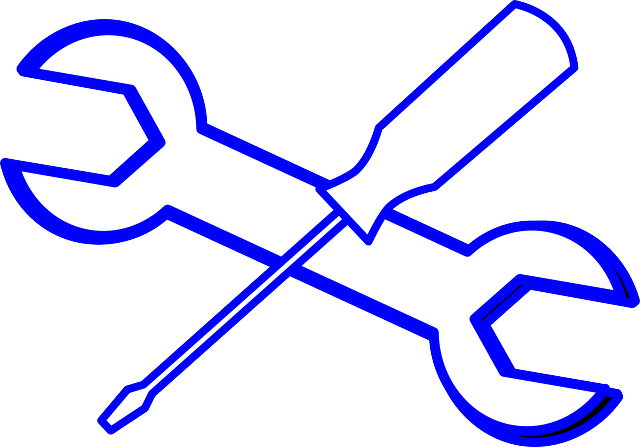Repairing drywall holes in your home is a fundamental home maintenance task that ensures a comfortable living space. This guide offers a detailed walkthrough for fixing drywall holes of varying sizes. For minor holes, apply joint compound over a mesh patch and smooth it out. Larger holes require carefully cutting out an equivalent-sized piece of drywall, which you then replace, securing it with screws and covering it with joint compound, taking care to feather the edges for a professional finish. After allowing the compound to dry, sand the area until smooth and paint to match your walls, completing the restoration process. The key to successful repairs lies in accurate damage assessment, precise cutting, and attention to detail throughout the repair and finishing process. This guide is an essential resource for homeowners looking to perform their own drywall repairs, ensuring that their homes remain attractive and structurally sound.
Repairing drywall holes is a common home repair task that can be accomplished with the right approach and materials. Whether the damage stems from a wayward hammer or a stubborn piece of furniture, addressing it promptly ensures your walls maintain their pristine condition. This article outlines a comprehensive step-by-step guide for patching drywall holes, designed to empower homeowners with the knowledge and techniques necessary for a seamless repair. From assessing the hole’s size and gathering the essential tools and materials to executing the patch with precision, we’ll cover all aspects of this home improvement task. By following our detailed instructions on cutting out the damaged area, applying the patch, taping seams, smoothing joint compound, sanding, priming, and painting, you’ll achieve a finish that will blend flawlessly with your walls, restoring the integrity of your space.
Assessing and Preparing for Drywall Patching: A Step-by-Step Guide to Home Repairs

When a drywall hole disrupts your home’s serenity, it’s important to address the issue promptly with effective home repairs. The first step in patching drywall holes is to assess the damage. Determine the size and depth of the hole, as this will dictate the type of patch needed. Small, shallow holes can often be patched with a simple joint compound and a mesh patch, while larger or deeper ones may require a multi-step process involving cutting out a larger section of drywall for proper fitting of the new material.
Once the extent of the damage is understood, preparation is key. Begin by cleaning the area around the hole to remove any loose debris or dust. This ensures a clean and smooth surface for the patch to adhere to. Next, measure and cut a piece of drywall that matches the shape and size of the hole. The patch should be slightly larger than the hole itself to allow for proper alignment and coverage. Use a drywall saw or utility knife for precise cutting. With the area cleaned and the new drywall piece ready, you can proceed to secure the patch with drywall screws or mud it in place for smaller repairs. After securing the patch, apply joint compound over it, feathering the edges to blend seamlessly with the surrounding wall. Allow the compound to dry according to the product’s instructions before sanding and preparing for painting, thus completing your home repair task effectively.

When it comes to home repairs, addressing drywall holes is a common task that ensures your walls remain attractive and structurally sound. The process of patching drywall holes can be straightforward with the right approach. Begin by gathering your materials, which typically include drywall compound, drywall mesh or joint tape, drywall joint compound, a putty knife, sandpaper, a damp cloth, a pencil, and safety glasses to protect yourself during the repair process. The first step is to remove any loose or flaking material from the hole using the putty knife. Next, clean the area thoroughly with a damp cloth to ensure a good bond between the patch and the surrounding drywall.
For smaller holes, applying a generous amount of joint compound directly with the putty knife can effectively fill the gap. Smooth the compound over the hole, feathering the edges to blend seamlessly with the existing wall surface. For larger holes, you may need to cut a piece of mesh or joint tape to size and position it over the hole before applying the joint compound. Allow the patch to dry according to the product’s instructions, then gently sand the area until it is level with the surrounding wall. Finish by wiping down the repaired section with a damp cloth to remove any dust, ensuring that your home repairs result in a smooth and flawless finish. Regularly maintaining and repairing these minor damages can prevent more extensive repairs in the future, making home repairs a key aspect of home maintenance.
Repairing drywall holes is a common home repair task that can be accomplished with patience and attention to detail. This article has outlined the essential steps for assessing the damage, preparing the area, applying the patch, and finishing the surface to blend seamlessly with the surrounding walls. By following this step-by-step guide, you can effectively address drywall imperfections and restore your home’s integrity and appearance. Remember to use appropriate safety gear and tools to ensure a clean and professional outcome for your home repairs. With these skills, you’re well-equipped to handle any drywall hole that arises, maintaining the longevity and aesthetic appeal of your living space.
